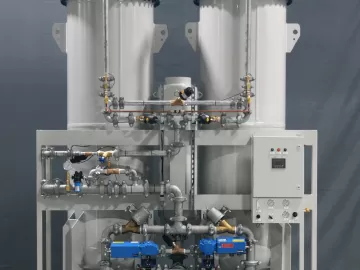Motor Controls in Centrifugal Air Compressors
The days are long gone when power to a motor was controlled with a knife switch. These were cumbersome and downright dangerous to man and equipment alike. Every electric motor has some form of controller, responsible for turning over (starting) the motor or motor-controlled equipment. These controllers offer differing features and complexity depending on the application, United States electrical codes require the use of a motor starter that meets NEMA’s National Electrical Code as well as all local electrical codes.








